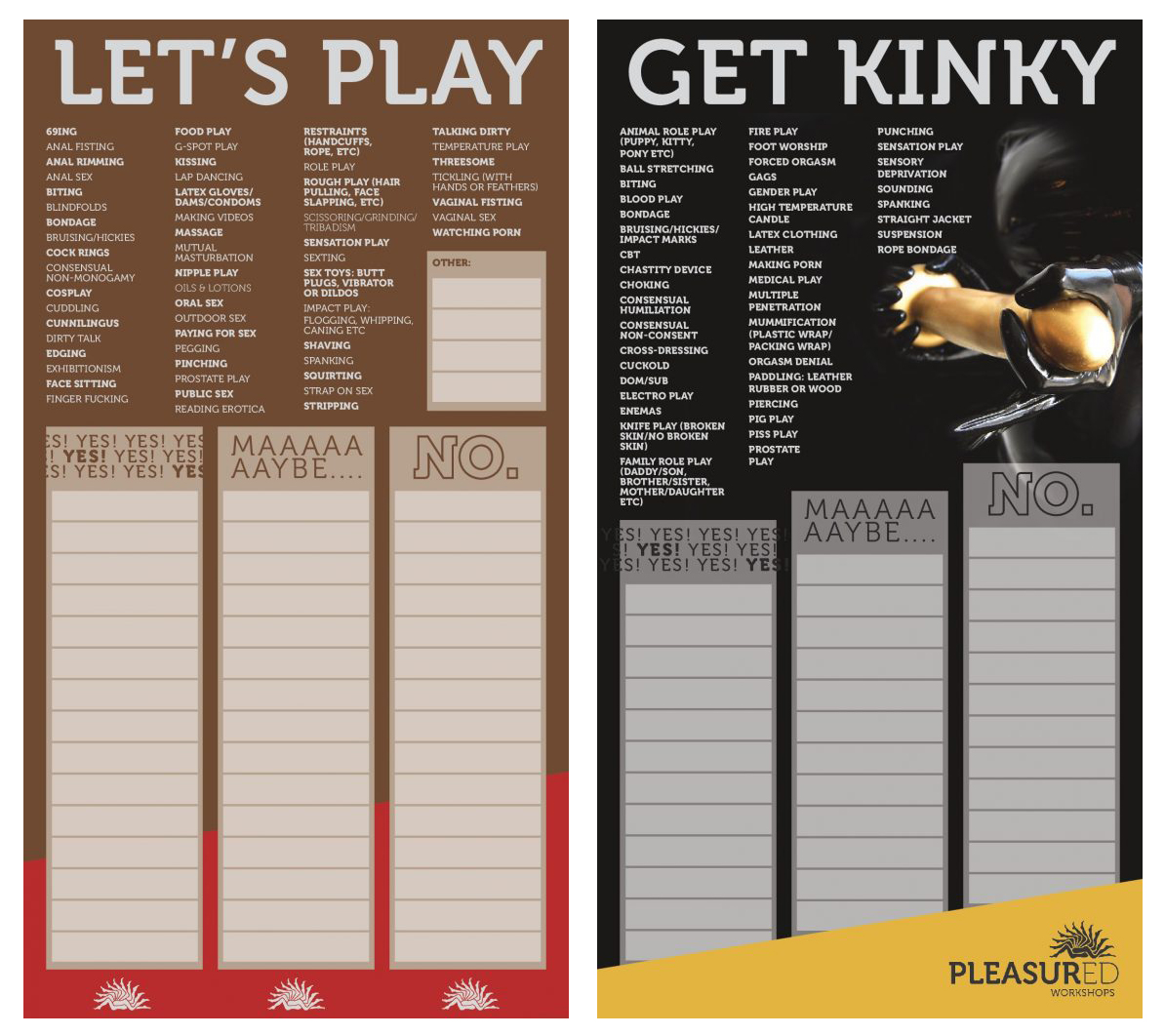BDSM for Beginners
BDSM is the commonly used catchall term for bondage, discipline, submission, dominance, sadism, and masochism. It can include role-playing with dominant and submissive roles, restraints, sensation play (exploring with ice cubes or hot wax, or deprivation with gags or blindfolds), impact play (such as spanking or flogging), and much more.
**
booty-spank.jpg
**
You've probably seen some form of BDSM depicted on television, in movies, or even snuck into an otherwise "vanilla" porno film. Maybe it made you curious, maybe it turned you on, or maybe it turned your partner on and now you sleep with one eye open, afraid that some night you'll wake up to get a glass of water and find yourself tied to the bed. Well fear not, adventurous friend, for BDSM is all about mutual consent and negotiated boundaries. There's a whole lot to learn, and we carry several books and DVDs to help you along on your journey, but this is quick guide to get you started.
We hear a lot of questions from people about BDSM. Here are some common ones:
"Wait, what is BDSM again?"
BDSM is the commonly used catchall term for bondage, discipline, submission, dominance, sadism, and masochism. It can include role-playing with dominant and submissive roles, restraints, sensation play (exploring with ice cubes or hot wax, or deprivation with gags or blindfolds), impact play (such as spanking or flogging), and much more.

"Doesn't all this hurt? Why would anyone like pain?"
The idea that BDSM is all about pain is incorrect, although most agree that certain things that would be painful in a street fight, like someone scraping their nails across your skin, can feel great and be totally hot in the right context. For many BDSM players, the pleasure is not only in the sensation, but the connection and intimacy between partners in a situation where communication and trust is of the utmost importance. The power dynamics involved in BDSM, whether you are playing master and submissive or calculus teacher and failing football star eager to get the grade, can be extremely erotic.

"Okay, so maybe I like it when my partner blindfolds me and tickles my feet no matter how much I try to wiggle away, but what if I REALLY want them to stop?"
In the BDSM world, players make up a safe word to let their play partner know when they need to stop or slow down. Words like "stop" or "ouch" don't work well as safe words because, especially in the midst of intense power play or discipline, they can seem like part of the action. It's important, for that reason, to pick a very specific safe word that you and your partner will remember easily. It can be as simple as "yellow" for slow down and "red" for stop, or you can get more creative, as long as it stands out.
"I'm really liking the sound of this. Uh oh, does that mean I'm a freaky sexual deviant?"
No way! The thing to remember is that the motto for the BDSM community is Safe, Sane, and Consensual. Sometimes, especially as depicted in the mainstream media, scenes of BDSM can seem intimidating at best and downright abusive at worst. This is not the case at all because, in real life, people involved in BDSM acts have discussed their boundaries, desires, and safe words ahead of time. They discourage or ban use of drugs or alcohol during play or playing with an unclear mind.
Keep in mind that enjoying BDSM doesn't mean you have to give up your job at Pottery Barn and move into a dungeon. Some people are "lifestyle players" within their relationships or daily lives, but many choose to only bust out the ball gag late at night or bring out the suspension hooks on the weekends or simply add a little spice to their regular sex lives with a blindfold and ice cubes. You can incorporate as much or as little BDSM into your life as you want. It's all about what turns you and your partner on.

"Wow, thanks! I totally feel so much better! Should I go out and get a leather face mask, bullwhip, and spreader bar right now???"
Enthusiasm noted and appreciated, but no. When beginning to explore BDSM, it's best to start out slowly, not only for safety's sake, but for your wallet as well, until you know a little more about what you like and how to use more advanced implements. Since communication is so important in the practice of BDSM, the first place to start, of course, is by talking with your partner. If you need some guidance, use the Yes/No/Maybe List, one of our favorite tools to get people talking about sex, desires, and boundaries. Depending on your comfort level you can try role-playing and begin to play with power dynamics.
Reading books like The New Bottoming Book and The New Topping Book, or SM 101 can help you learn new tricks and figure out what kinds of things tickle (or slap) your fancy the most. Speaking of a sexy slap session, spanking is a great place to start exploring. Use your hand at first so you have optimal control of the impact and stroke. Focus on fleshy parts like the ass and thighs, and eventually you can try something like a crop or slapper.
"Is there any other gear you'd recommend for beginners?"
As far as restraints go, we highly recommend using cuffs made of neoprene or leather that buckle at the wrist or ankle. You can attach them together using a piece of chain, rope, or an Under the Bed Restraints kit. Traditional handcuffs or silk scarves can tighten suddenly and cause pain and loss of circulation. We also love guiding absolute beginners to the Pleasure Tape because it is safe and versatile. The vinyl tape sticks to itself but not your skin, so it's sturdy but easy to remove. You can practice using it to bind hands, feet, as a gag or blindfold, even for total mummification without the fear of cutting off circulation or ripping off anything important when it's removed. A light flogger, pinwheel, or adjustable nipple clamps are a great for exploring sensation play.

The most important thing to remember (aside from your safe word) is that communication and trust are key elements to enjoyable BDSM play, and any sex, really. It's okay to experiment and have fun, just as it's okay to have a deep spiritual experience. Our bodies and their varied responses to stimuli are what make sexual encounters so exciting and pleasurable.








